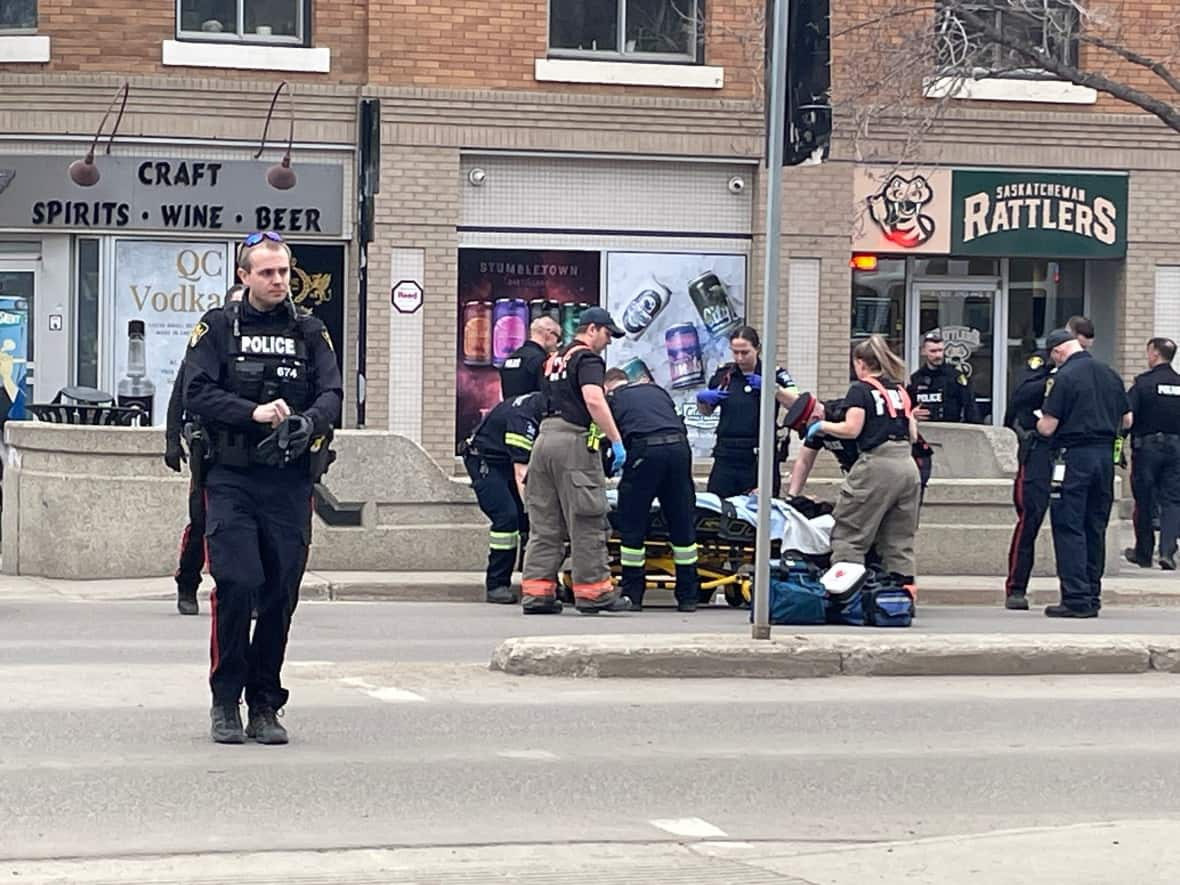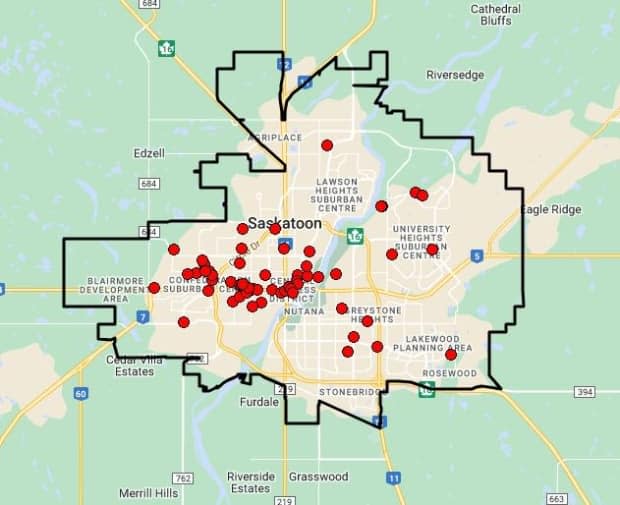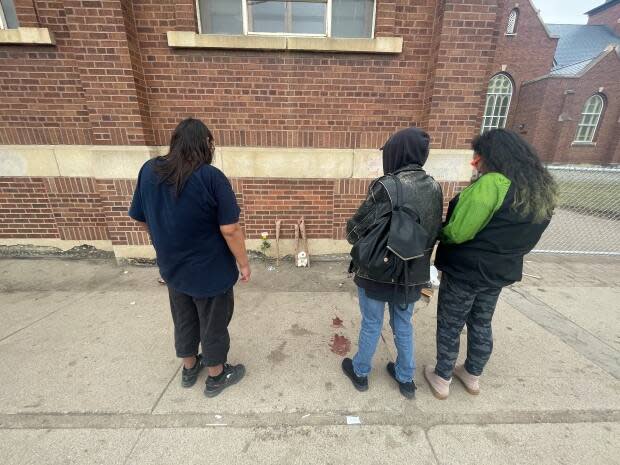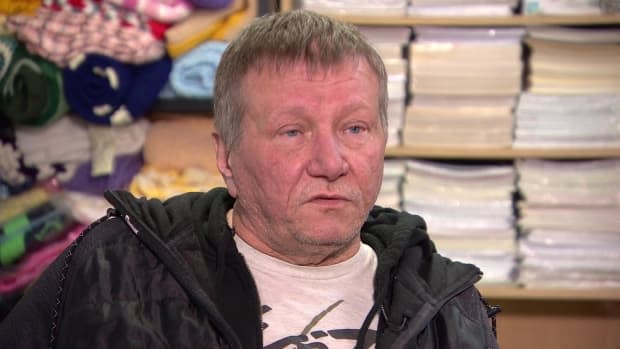7-day stretch of violence reveals extent of issues Saskatoon faces heading into summer 2024

Warning: this story contains disturbing details.
It was late afternoon on a Monday when the gut-stabbed teen collapsed on a bench in front of dozens of horrified onlookers at the corner of 21st Street and Second Avenue S.
In minutes, marked and unmarked police cruisers with flashing lights and loud sirens descended on the busy downtown intersection, soon followed by ambulances and fire trucks.
Businesses nearby locked their doors.
By that evening, April 8, police had scoured video from surveillance cameras and arrested a 24-year-old suspect.
The man, described in court documents as having no fixed address, was charged with aggravated assault and breaching conditions related to an earlier assault.
WATCH| Here's what Saskatoon police have planned to help tackle crime in Pleasant Hill:
Surveillance cameras that captured the incident revealed a confusing sequence that began with the 15-year-old victim and a group of friends interacting with the accused in front of the Social Services building on Second Avenue.
People drifted to the corner in the immediate aftermath, drawn by the sirens bouncing off the downtown buildings. They passed others leaving the scene, eyes wide and holding their children close.
The common refrain from the knots of people: "What's happening?"
Don Meikle has an idea. He's the executive director of EGADZ, a street outreach group he joined back in 1993.
"I've seen this coming for a long time," he said in an interview.
"It's the perfect mixing pot of what can go wrong, what's gonna go wrong and what's gonna continue to get worse."
By the numbers
The stabbing that afternoon foreshadowed a violent week in Saskatoon. The violence was not just in the downtown, or core neighbourhoods.
There were two homicides, with the victims — 24-year-old Melissa Duquette and 25-year-old Kade Lee — dying 12 hours apart. These were the seventh and eighth violent deaths in the city so far this year. There were 12 in all of 2023, and the single year record is 16 from 2019.

There were also 70 assaults reported across the city from April 9 to 16, according to police statistics. Five aggravated assaults. A woman forcibly confined in the basement of house.
And it could have been worse. Veteran officers will say that the difference between an aggravated assault and a homicide can boil down to luck: a knife blade narrowly missing a major artery, a bullet just grazing the heart, a baseball bat breaking an arm bone instead of shattering a skull.
In that week, two homicides could have been seven.
Acting chief of police Dave Haye and Corey Lenius, the staff sergeant heading major crimes, made the rounds at media outlets trying to give context to the homicides.
There is no gang war, they said. The incidents are isolated and not linked. Each homicide has its own unique cluster of self-contained elements. There is no clear pattern.
The message is both reassuring and unsettling. If there is no pattern to parse, is this just the way Saskatoon is now?
The Pleasant Hill option
Kade Lee, the 25-year-old who was homicide number eight, was shot on the street in the Pleasant Hill neighbourhood.

Violence in the core neighbourhood is concerning enough that police did a special report for the Board of Police Commissioners on how it intends to address community safety.
Superintendent Darren Pringle is in charge of patrol officers deployed across the city. On April 18, he presented the plan to the board.
It features a three-layered approach that Pringle believes is replicable in other neighbourhoods.
The first layer is working with community association members, contacts in the neighbourhood and police crime analysts to identify the problems. Where are the problem areas, and why?
This could be as obvious as identifying abandoned houses where gang members will take kidnap victims to torture.
The second layer is "service mapping," looking at where police and fire are consistently responding to calls for crime, medical aid or property offences.
"Doing some community mapping to see where services are being used," he said.

The third layer is bringing in resources. In Pleasant Hill, that means police will redeploy three veteran constables on May 1 to concentrate specifically on the neighbourhood and its challenges.
Pringle spoke to reporters after the meeting. He acknowledged that, for all the work and consultation that went into the plan, police simply cannot stop all bad things from happening.
"I think there's an appetite right now for more of a proactive approach," he said. "[But] I think a reactive posture is always going to be our default … when the volume of calls gets to be such, sometimes you have to switch back to simply being reactive."
'They don't see any better future for tomorrow': Meikle
Don Meikle began working in the EGADZ's outreach van in the early 1990s. He's had a front row seat to the changes in Saskatoon.
Along the way, his own views have evolved in ways that surprise even him.
He will always advocate for positive outcomes for kids. But in the same breath, he'll add that "some people do need to be locked up. There's bad people and we've kind of lost focus of that."

To really make the city safer and help those in need of help first requires a clear-eyed admission that the city's problems are deep and citywide, he said. The homeless population is exploding. Every month seems to bring a new, even more lethal drug onto the street, he said.
"People are in psychosis now and they're not safe and they're not in their right minds. And they go out and they hurt people and they kill people," Meikle said.
"We've got people now that are walking around that don't see any better future for tomorrow."
Meikle is also challenging people in the city to take a good look in the mirror. The debate over the Saskatoon Tribal Council's wellness centre in Fairhaven, and the scuttled shelter in Sutherland, cuts close for Meikle. EGADZ has 18 homes for youth and families trying to change their lives in neighbourhoods around the city.
"Our society now is, yeah, we really love what you're doing. Just don't do it here," he said.
"These kids aren't stupid. These young adults aren't stupid. Nobody wants them. Nobody really wants to embrace them, or try to help them. It's just like, 'Oh yeah, yeah, you're doing a great thing.' Just don't do it in my neighbourhood."

